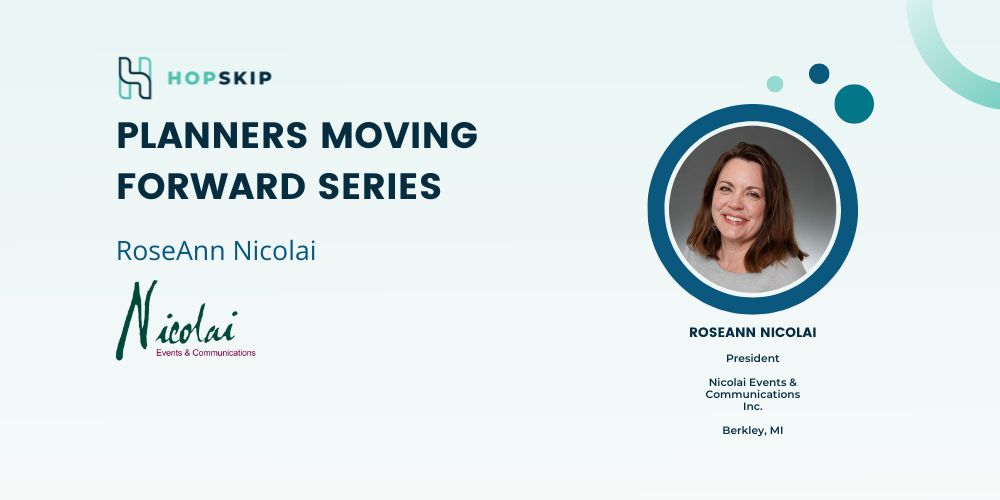This post is part of the HopSkip Planner Spotlight Series where HopSkip spotlight's planners across the industry to bring awareness of how they adapted to COVID-19, communicating and lessons learned and sharing how they are viewing the meetings and events industry in a post-pandemic world.
Name: RoseAnn Nicolai
Company Name: Nicolai Events & Communications
Job Title: President
Years of Experience: 20+
How do you think you are positioned, after months of persevering with the pandemic, to take advantage of our new and disrupted meetings/events landscape?
With having to pivot in 2020 to moving our events and meetings to be virtual, I along with my team were able learn additional platforms for producing events virtually. We know what types of meetings and events work well virtually and which ones need to be in person. In addition, with the constant change and shifting we had to do, I feel it has only made me stronger and I am to even more quickly adapt to new technologies.
As our community moves forward with planning in-person meetings, what new technologies or processes are you implementing that you may have not looked at before?
Creating less touchpoints. For example, instead of printing program books and other materials, we are using signage at tables/seating with QR codes to direct people online for agendas and handouts. We are still using larger footprint for meeting space. Tables where we usually seat 10, we seat 8 or six. Vendor booths are spread out a bit more to allow for less crowding. Virtual is here to stay and one of the positives that came out of the pandemic is that people realized that for certain meetings there are benefits to doing the event virtually. People who don't have it in their budget to travel, can still get the professional development programming they need. Clients realized they could reach more people - not as limited by geography.
As we see virtual meetings transition back to face to face, hybrid meetings are beginning to be the vehicle to return to normalcy. What are your thoughts on hybrid meetings versus traditional fully in-person meetings?
There is more work and expense in planning a hybrid meeting. For certain meetings they work well, especially educational ones or board meetings. But events where there is significant networking component to it, they can be difficult. People who attend in person usually want to network with those who are also attending in person. So separate networking opportunities must be set up for those who are joining virtually so they can network together. Yet, you still must be able to give the opportunity for the few who are in person that want to connect with attendees who are attending virtually.
In your opinion, what do you think the biggest value for your attendees is in regards to returning to live events?
Face-to-face meetings builds stronger relationships. At a live event you have the opportunity to meet more people. Networking is just easier.
As the pandemic fades away and we return to face-to-face events what do you hope changes, either for planners or hoteliers, in the traditional RFP and proposal process as a result of all of the learnings from the last 20+ months?
I hope the spirit of collaboration continues. We all had to be flexible to survive these past two plus years. As meetings returned in person, both needed to be willing to work together whether the planner understanding they may not be able to get a specific menu item due to a supply chain issue and hoteliers willing to provide for more space, so attendees felt comfortable without significant price increase.
This post is part of the HopSkip Planner Spotlight Series where HopSkip spotlight's planners across the industry to bring awareness of how they adapted to COVID-19, communicating and lessons learned and sharing how they are viewing the meetings and events industry in a post-pandemic world.
